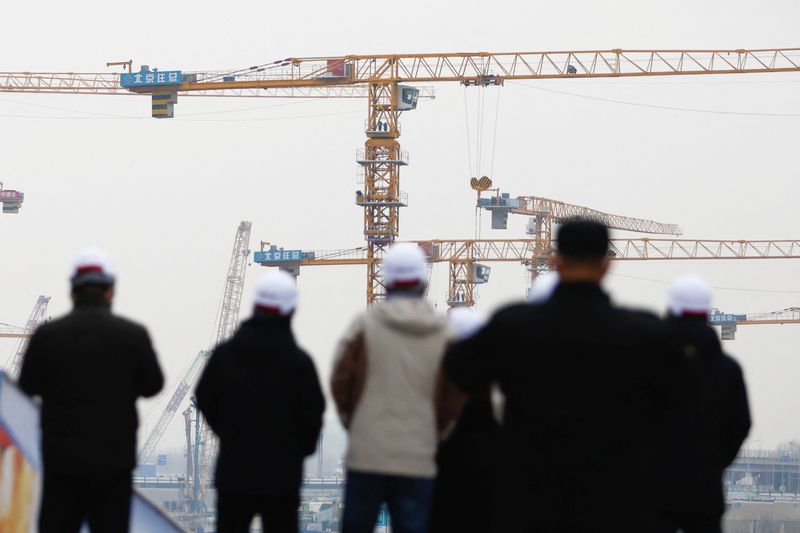
© Reuters. FILE PHOTO: People look on near cranes standing at a construction site in Beijing, China January 12, 2023. REUTERS/Tingshu Wang
By Andrea Shalal
WASHINGTON (Reuters) – Average potential global economic growth will slump to a three-decade low of 2.2% per year through 2030, ushering in a “lost decade” for the world’s economy, unless policymakers adopt ambitious initiatives to boost labor supply, productivity and investment, the World Bank warned on Monday.
Failure to reverse the expected broad-based slowdown in potential gross domestic product (GDP) growth would have profound implications for the world’s ability to tackle climate change and reduce poverty, it said in a new report.
But concerted efforts to boost investment in sustainable sectors, cut trade costs, leverage growth in services, and expand labor force participation could boost potential GDP growth by up to 0.7 percentage point to 2.9%, the report said.
“A lost decade could be in the making for the global economy,” said World Bank chief economist Indermit Gill, adding that policies which incentivized work, increased productivity, and accelerated investment could reverse the trend.
The average GDP growth rate is a sort of “speed limit” for the global economy, charting the maximum long-term rate at which it can grow without sparking excess inflation.
The report said the overlapping crises of the past few years, including the COVID-19 pandemic and Russia’s invasion of Ukraine, had ended nearly three decades of sustained economic growth, adding to building worries about slowing productivity, which is essential for income growth and higher wages.
As a result, average potential growth in GDP was seen dropping to 2.2% from 2022-2030, down from 2.6% in 2011-21, and nearly a third lower than the 3.5% rate seen from 2000-2010.
Low investment will also slow growth in developing economies, with their average GDP growth dropping to 4% for the rest of the 2020s, from 5% in 2011-2021 and 6% from 2000-2010.
Rising productivity, higher incomes and declining inflation helped one out of four developing countries reach high-income status over the past three decades, but those economic forces are now in retreat, the report said.
It said productivity was likely to grow at its slowest clip since 2000, investment growth in 2022-2024 would be half the rate seen in the last 20 years and international trade was growing at a much slower rate.
To change the trajectory and attract more investment, policymakers should prioritize taming inflation, ensuring financial-sector stability and reducing debt.
Increased climate-friendly investment in transportation and energy, climate-smart agriculture and manufacturing, and land and water systems could boost potential growth by up to 0.3 percentage point per year, it said.
Lowering the costs associated with shipping, logistics, and regulations could boost trade, it said, calling for changes to remove the current bias toward carbon-intensive goods inherent in many countries’ tariff schedules and eliminate restrictions on access to environmentally friendly goods and services.
Boosting exports of digital services could result in big productivity gains, while raising labor force participation rates for women and others could raise global potential growth rates by as much as 0.2 percentage point a year by 2030.





